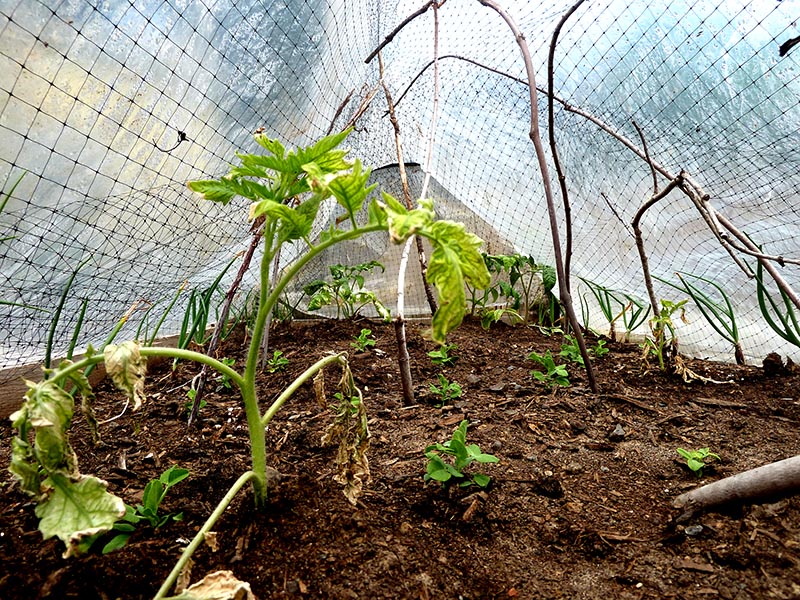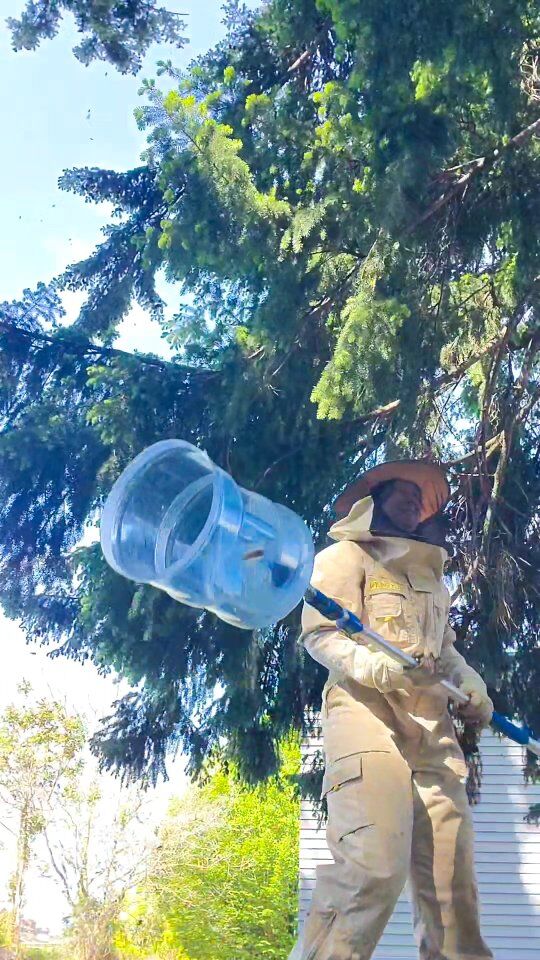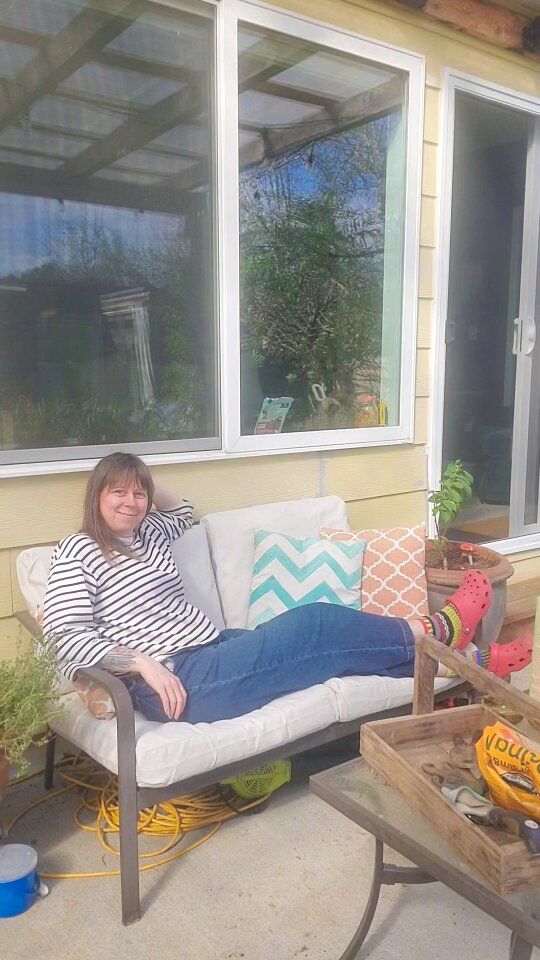
Tomatoes growing under bird netting (to protect them from neighborhood cats) when nighttime temperatures are consistently 55 degrees or above
Moving tomatoes out too early may kill the tender plants, who do not appreciate cold nights. Even if they do survive, their growth and fruit production may be damaged all season from the over-eagerness of transplanting too early.
I grew my tomatoes this year from seed and by mid-April the area had turned into a tomato jungle! I felt like I didn’t have much choice, as several were outgrowing their pots and my seed starting mix was getting used up quickly. I decided to move them outside early, but I covered them with greenhouse plastic to protect them from chilly spring temperatures.
Contractor’s plastic is a cheap substitute for greenhouse plastic, which I used many years ago. It eventually cracks and your beautiful, organic garden will get covered with tiny flecks of plastic sheeting – super messy and hard to clean up. If you are interested in extending your growing season, greenhouse plastic is a wise investment from your local nursery store and worth the cost longterm.
Prior to planting, I laid out my tomatoes and various starts among all my raised beds to ensure they each had enough spacing. Although I always start with a solid vegetable garden plan, things shift when it comes to planting. Instead of interplanting the tomatoes with herbs, I ended up with too many beets and planted them in between the tomatoes instead. Tomatoes grow up and beets grow down, so I’m hoping for a nice companion planting combination.
I followed my usual practice of burying the tomatoes when transplanting. You can find out more about this method in my previous post on How to Plant Tomatoes, but the basic idea is that those little “hairs” on the tomato stems turn into roots if buried in soil. Your tomatoes will be sturdier and more resilient by having a strong, deep root network to get through the summer months.
Juniper, always the garden helper, needed a “job” to do while we were transplanting. She recently got an adorable, small watering can that is the perfect size for her to lift when it’s full of water. Her job was to water the newly transplanted tomatoes. Even if rain is in the forecast, always water your new transplants in well. They will undergo shock even under the best conditions, so pamper them those first few weeks until they get established.
Are your tomatoes in the ground already? Do you have a tried and true ritual on when they get planted outside? I would love to hear about tomatoes on your homestead in the comments below!









 This cluster was about the siz
This cluster was about the siz




 I start with a
I start with a



So glad they made it and are doing well!
What are the black supports made of in your tomato bed?
Barbara, those are black plastic irrigation tubes. They are hooped over the beds into rebar that I’ve driven into the corners of the beds. I have bird netting draped over the top, mostly to keep neighborhood cats from using the beds as a litterbox.